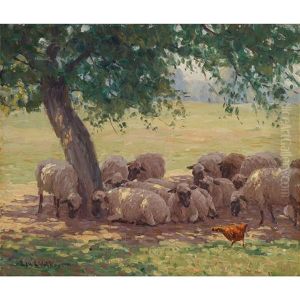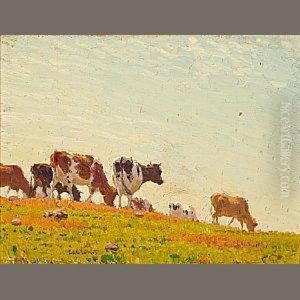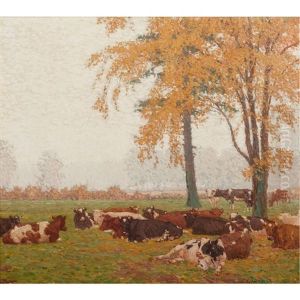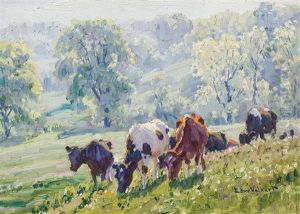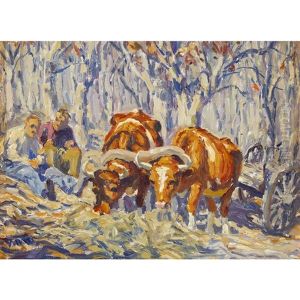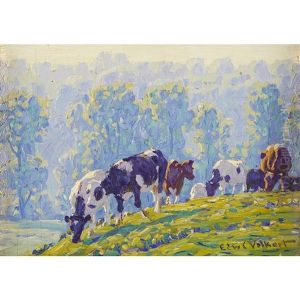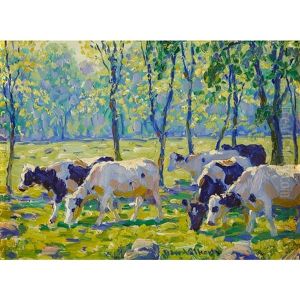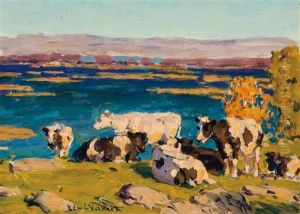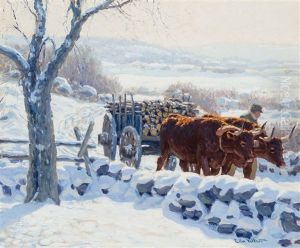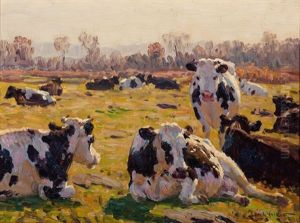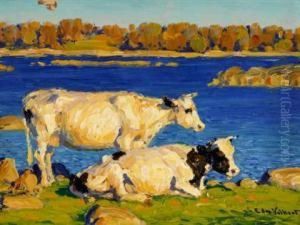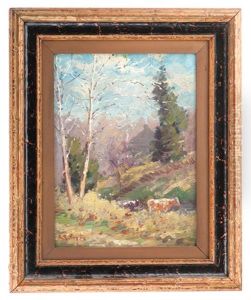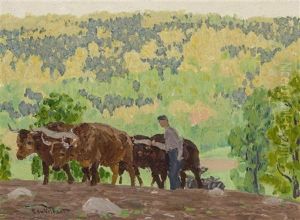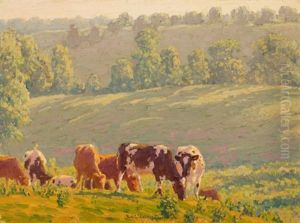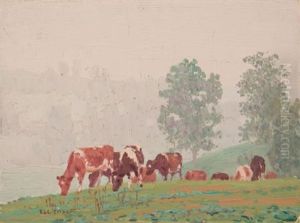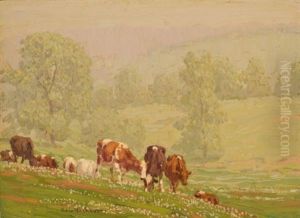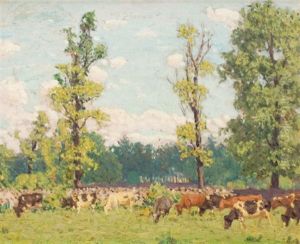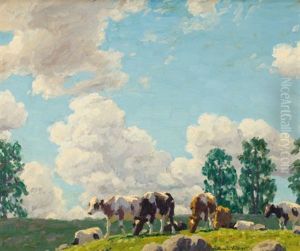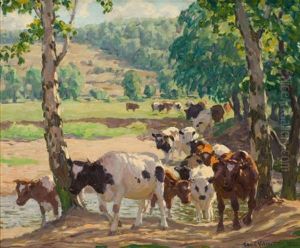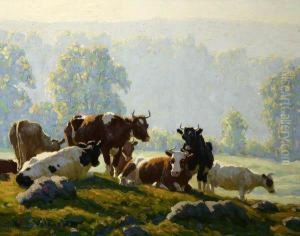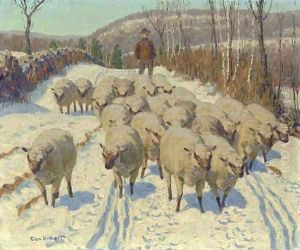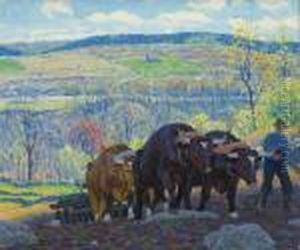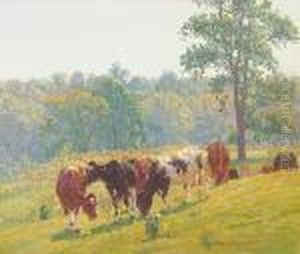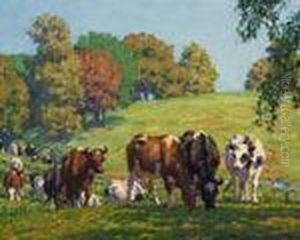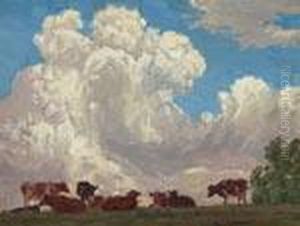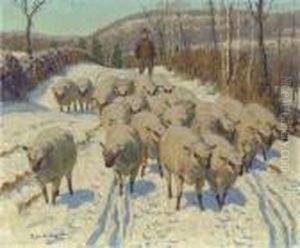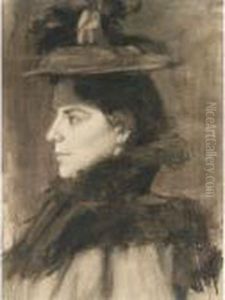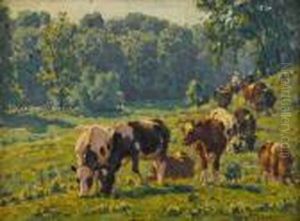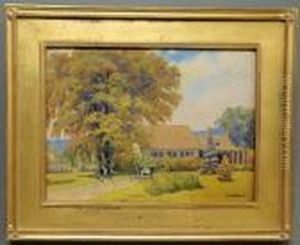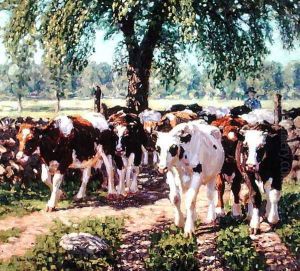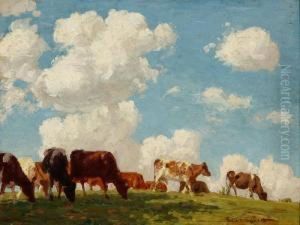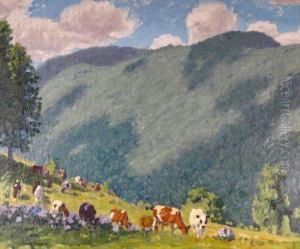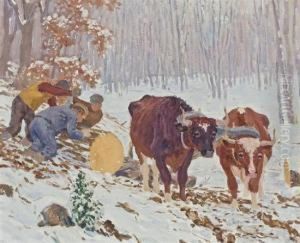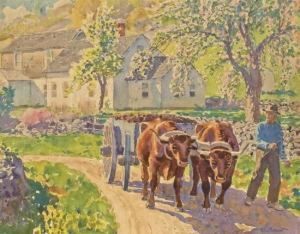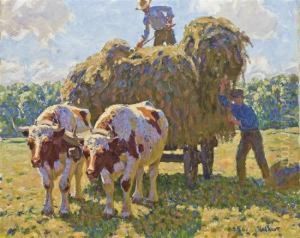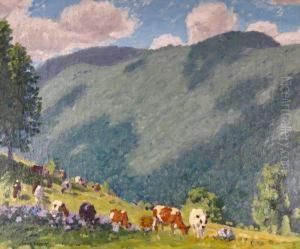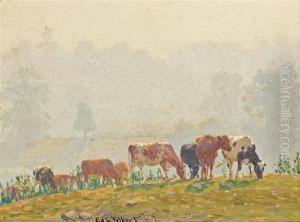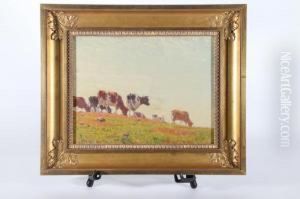Edward Charles Volkert Paintings
Edward Charles Volkert was an American painter known for his bucolic landscapes and particularly for his depictions of cattle and livestock. Born on August 11, 1871, in Cincinnati, Ohio, he developed an interest in art at an early age. His initial education in the arts came from the Cincinnati Art Academy, where he studied under Frank Duveneck, a well-respected figure in the American art scene of that time.
Volkert's work was heavily influenced by the Impressionist movement, which was gaining popularity in Europe and America during his formative years as an artist. He was especially influenced by the Barbizon school, which emphasized painting rural scenes directly from nature. Volkert's own style evolved to focus on pastoral scenes, often capturing the daily life of farm animals with a particular emphasis on cattle, which became his signature subject matter.
In the early 1900s, Volkert moved to New York City, where he became a part of the burgeoning art scene. He exhibited his work at various institutions, such as the National Academy of Design and the Pennsylvania Academy of the Fine Arts. Despite the urban environment, he continued to seek inspiration in rural settings, often traveling to the countryside to paint.
Volkert's paintings are characterized by their vibrant use of color, dynamic composition, and the ability to capture the mood and atmosphere of the pastoral settings he so loved. He had a knack for infusing his scenes of cattle and landscapes with a sense of life and movement, which made his work resonate with both critics and the public.
Throughout his career, Volkert received several accolades and his paintings were acquired by numerous collectors. He became a member of the National Arts Club and the Salmagundi Club, two prestigious art organizations in New York.
Edward Charles Volkert passed away on March 4, 1935, in Essex, Connecticut. Although not as widely known today as some of his contemporaries, Volkert left behind a body of work that continues to be appreciated for its contribution to American Impressionism and its idyllic portrayal of early 20th-century rural life.
